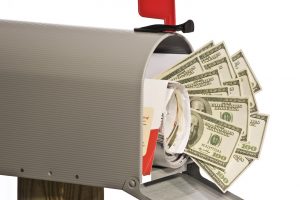The traditional (and frankly easiest) way to evaluate a direct mail program is to determine net revenue and the number of donors you keep, gain, and lose. A mature and well managed program will invest in acquisition, end the year with more donors and, if you are really good, achieve an overall higher average gift to boot. Results are evaluated annually or semi-annually to inform the next budget cycle strategy. If this is your approach to valuing your mail program you will be challenged to sell greater investment in the program to your boss… especially these days.
Consider taking a longer, more detailed, and sophisticated view of direct mail value. While all of the above is obviously important, it is important to acknowledge that “unexpected” windfalls, such as significant bequests, are often from longtime $25 direct mail donors. These are the ultimate rewards from a regular mail solicitation program that keeps your mission and need for philanthropy in front of your lower profile and often overlooked donors and stakeholders.
Assuming that gifts like these are rarely direct-mail-driven ignores a striking reality: your donor file contains wealthy people who give you – and many other organizations – money regularly. Even billionaires write $100 checks! The size of their gifts may not elevate them to your attention, but it is your job to find those high net worth donors hiding in your file and to do something about them.
Stories abound about the gift officer who picked up the phone to thank a donor for his/her large mail gift or loyal giving and ended up with a new friend, a larger donor, and sometimes a new major donor. Here are some key questions for consideration in regards to direct mail and fundraising:
- Should the $2.5 million gift made by a $1,000 direct mail donor five years after her initial, $25 response to an acquisition letter, be “credited” to direct mail?
- What about the $1 million campaign gift from a donor referred to your group by one of your low dollar mail donors?
- And what about those bequests?
The correct answer to all the above is “YES!” But of course, let’s also be careful to credit these gifts to the organization as a whole: to all the programs that touched the donor. The profession of fundraising will be able to achieve its greatest success when all development folks come out of their job-title silos and take a collaborative view on performance. And in this context, direct mail undeniably sets up and contributes to major and planned giving success!
A properly integrated development office will identify these targeted mail donors through wealth screening and has the staff to make personal contact with them and plumb the potential to elevate them to greater generosity and involvement. The annual giving officers are central to feeding the major gift pipeline, and the direct mail program gives them “grist for the mill”.
If your in-house mail program is not growing net revenue and increasing the pool of active donors from year to year, you should consider bringing in an expert to help turn things around. Whether you hire a dedicated staff specialist or an experienced direct response consultant, you need someone who can look beyond the typical metrics that define mediocrity, and offer integrated wisdom and technique to ensure that direct mail becomes an effective and productive incubator for your major and planned gift donor portfolio.
And here’s the silver lining: Your can now re-task and retrain the annual giving staff (formerly assigned to direct mail) to take personal engagement to the next level, meet with prospective major donors, and ask for larger gifts. This is why we call it “development” and not simply “fundraising.”
Your takes:
- The true value of your direct mail program far exceeds the number of dollars and donors generated per each campaign.
- Your best and next gift just might come from a regular, but under the radar, direct mail donor. It’s time to re-examine who should be on your prospect radar.
- Consider bringing in direct mail expertise to realign, integrate, and optimize your direct mail program. Dollar for dollar, it could be one of the wisest investments you make.
For more information about Copley Raff and its spectrum of not for profit consulting services, please see www.copleyraff.com.
Have a development, executive recruitment, or campaign strategy or management challenge? Let’s talk! Click here to connect with Rebekah Kaufman, Director of Consulting Services at CRI.


